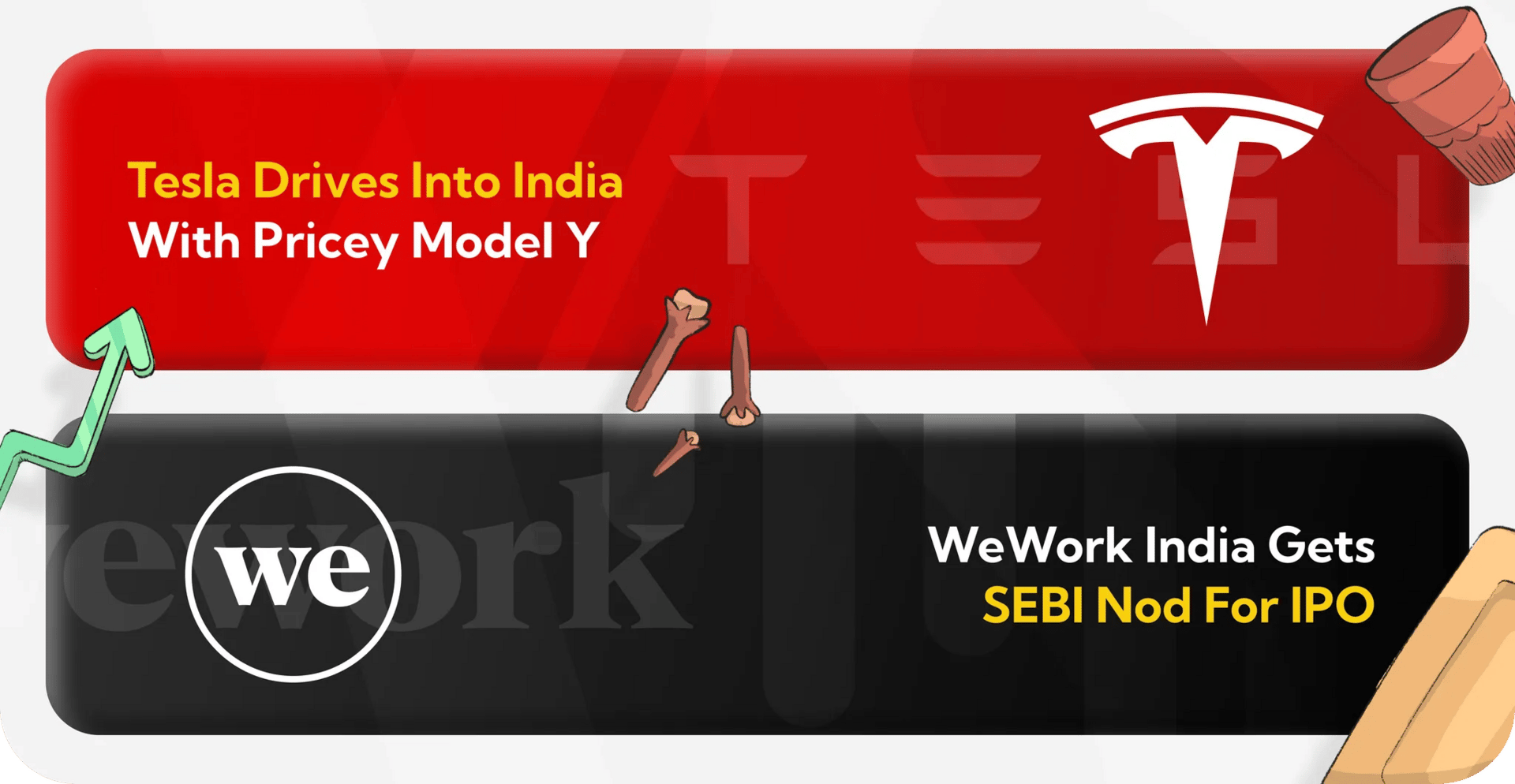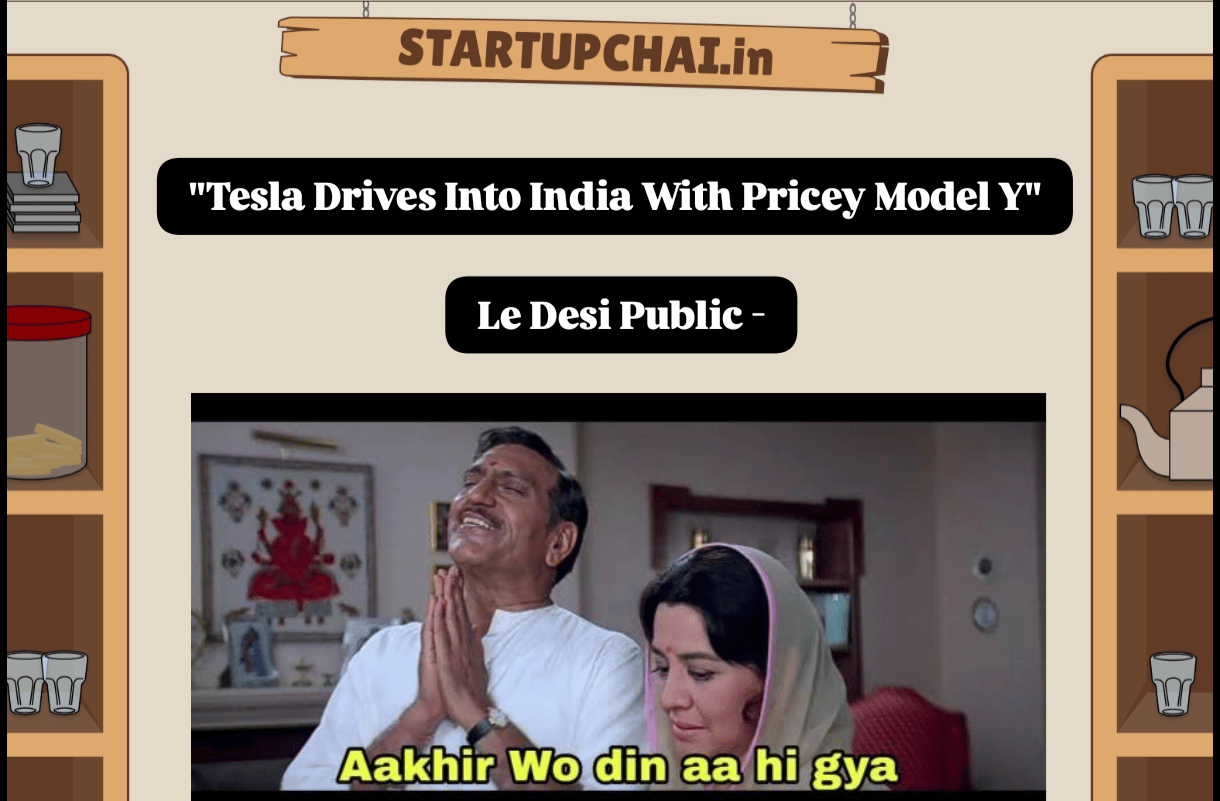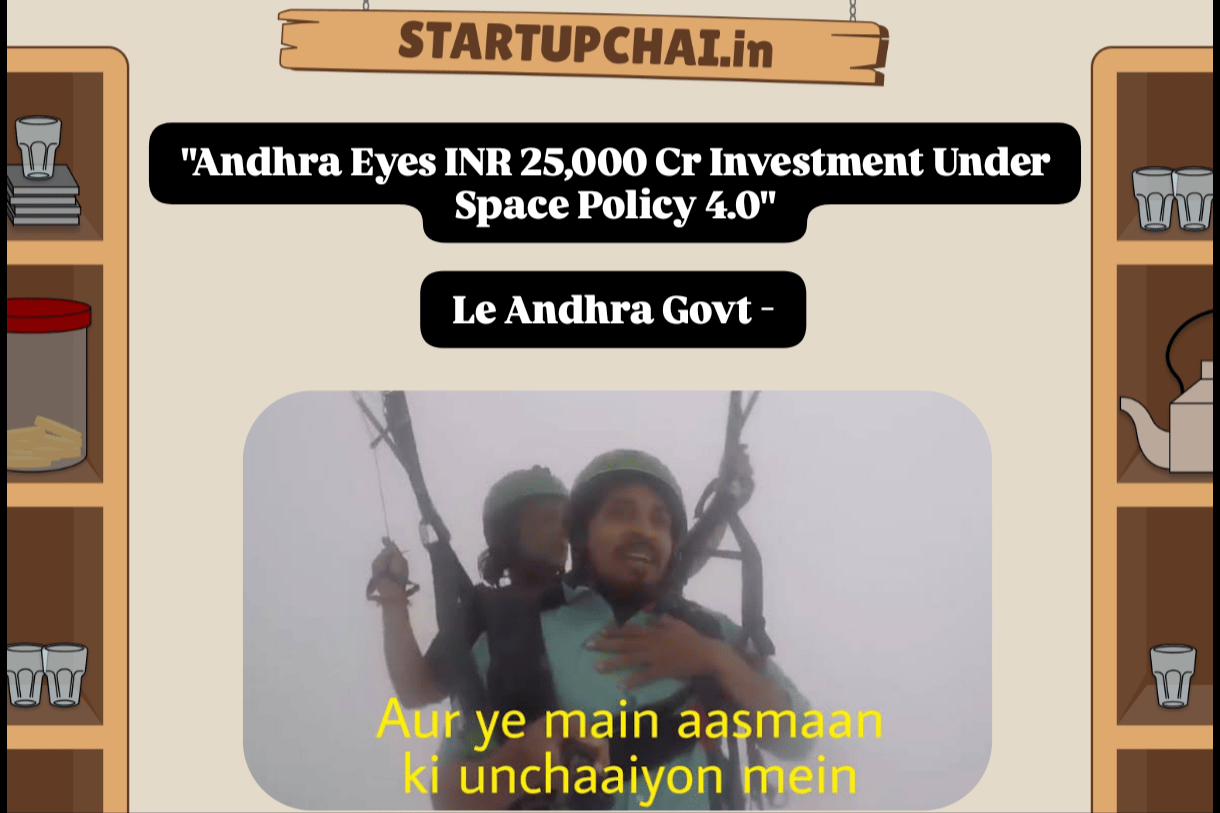- Startup Chai
- Posts
- Bengaluru Traffic Woes, Tesla Drives Into India, and Groww’s ‘915’
Bengaluru Traffic Woes, Tesla Drives Into India, and Groww’s ‘915’
Plus Andhra’s Space Policy 4.0 and fundraising news about PayU India, Vaaree, and Unibose

Two hours in a car, barely moving. That’s all it took for Prashant Pitti to do what the government hasn’t - commit ₹1 crore from his own pocket to tackle Bengaluru’s traffic mess. But this is bigger than one man’s crusade. Bengaluru is now the second-most congested city in the world, and the problem didn’t appear overnight. It’s the result of decades of policy paralysis, poor planning, and unchecked urban sprawl.
Let’s start with the data. Bengaluru is now ranked the second-most congested city in the world, according to the 2023 TomTom Traffic Index. Commuters spend an average of 260 hours per year stuck in traffic. That’s nearly 11 days lost annually, per person. Compare this to Delhi (140 hours), Hyderabad (120 hours), and Mumbai (150 hours). The contrast is sharp.
The city’s vehicle density has skyrocketed, with over 1.1 crore registered vehicles, including nearly 85 lakh two-wheelers, on just around 2.5 km of road per square kilometer. For comparison, Delhi has a road density of 11 km per sq km, and Mumbai has 9.5 km per sq km. Bengaluru also has more than 850 vehicles per 1,000 people, higher than Delhi (approximately 680) and far above Hyderabad’s 540. The problem isn’t just about the number of vehicles, it’s about how poorly the city was designed to accommodate them.
Historically, Bengaluru’s population exploded far faster than its infrastructure. Between 1991 and 2021, the population grew from 4 million to over 13 million - a more than 3x jump. Compare that with Delhi, which doubled from around 9 million to 19 million in the same period, or Hyderabad, which went from 4 million to around 10 million. Bengaluru’s growth was not just faster, but also unplanned.
Much of this was driven by the IT boom in the early 2000s, which created clusters of jobs in Whitefield, Electronic City, Outer Ring Road, and Sarjapur - areas that were once peripheral and lacked proper connectivity. Add to that a low Floor Space Index (FSI) that restricted vertical development, forcing horizontal sprawl. Combine that with a lack of a grid-based road layout, and you have a recipe for gridlock.
Urban planning failed to keep up. Residential zones were built far from business hubs. Public transit didn’t expand in sync. Unlike Mumbai or Delhi, which have a much higher share of public transport usage (around 40-45%), Bengaluru’s public transport share remains under 25%.
Efforts have been made, but they've often fizzled. In 2019, #BengaluruMoving brought together private players and civic groups to advocate for last-mile connectivity and shared mobility. It had early traction, but eventually died out due to lack of execution and support. Government projects like the Elevated Corridor Plan and Suburban Rail have remained stuck in red tape. Even the Namma Metro, though ambitious, covers only 74 km, far behind Delhi’s 390 km, and misses most outer areas where congestion is worst.
Meanwhile, overlapping authorities - BBMP, BMRCL, BMTC, Traffic Police - have no unified command or integrated data system. Policy paralysis and jurisdictional confusion mean that even well-funded plans suffer from poor execution.
Into this chaos steps Prashant Pitti’s ₹1 crore pledge. His aim is not to solve the problem at scale, but to fund 2-3 pilot projects that demonstrate scalable impact. This could include:
AI-based signal optimization, reducing average wait times.
Dynamic traffic rerouting tools using real-time congestion data.
Micro-mobility experiments, like e-bike hubs for last-mile travel.
These are not new ideas, but the hope is that private initiative might do what public policy has failed to. And it’s not just Pitti. The tech industry is now vocal about the cost of congestion. For startups that thrive on speed and efficiency, a 2-hour commute can kill productivity.
The solution lies in a multi-pronged approach:
Expand public transport rapidly, especially metro and bus coverage to IT corridors.
Disincentivize private vehicle usage via congestion charges or stricter parking norms.
Create a Unified Mobility Authority to consolidate planning and execution.
Adopt higher FSI and encourage transit-oriented development to reduce commuting distances.
Fix internal street design to improve walkability, reduce bottlenecks, and introduce smart traffic systems.
Because if Bengaluru continues down this path, its biggest risk isn’t just bad traffic. It’s losing its reputation as India’s startup capital. And at some point, no amount of venture capital can buy back the time lost in traffic.
Let’s go through what else is happening in Indian startup world - Grab your simmering cup of StartupChai.in and unwind with our hand-brewed memes.

“America Se Aaya Mera Dost”: Tesla Drives Into India With Pricey Model Y
After years of lobbying and stalled plans, Tesla has quietly entered India, opening its first showroom in Mumbai and beginning Model Y orders online.
But with a starting price of around $70,000, its steepest globally, the EV arrives burdened by heavy import duties and limited accessibility. As sales slow in the West, Tesla’s India debut feels more like a cautious toe-dip than a market revolution.
Read more here

“Shoot For Stars”: Andhra Eyes INR 25,000 Cr Investment Under Space Policy 4.0
Andhra Pradesh is shooting for the stars with Space Policy 4.0, aiming to attract ₹25,000 Cr in investments.
The plan is to build two space cities, roll out startup grants, and create thousands of jobs over five years. With Tirupati and Sri Satya Sai districts at the helm, India’s spacetech dream just got a new launchpad.
Read more here


“Adbhut, Akalpaniye, Avishwasaniye”: IPO-Bound Groww To Launch New Platform To Augment Revenue
IPO-bound Groww is stepping up its game with ‘915’, a new standalone platform tailored for serious, high-volume traders.
Unlike its beginner-friendly app, this one’s web-only, packed with pro tools and customisation. As it preps for the public market, Groww is clearly eyeing deeper trading pockets.
Read more here

“Humari Bhi Haan Hai”: WeWork India Gets SEBI Nod For IPO
WeWork India just got SEBI’s green light for its long-awaited IPO, marking a key milestone for the flex-space giant.
Backed by the Embassy Group, the IPO is a pure offer-for-sale meaning the money goes to existing shareholders, not the company. After months on hold, the coworking brand is finally ready to test the public market.
Read more here

Plum is investing ₹200 Cr to launch ‘Plum Health’, expanding beyond insurance into diagnostics, teleconsults, and AI-driven health tracking. With Prayat Shah onboard, the move signals a bold push into India’s digital health frontier.
Read more herePayU India has secured ₹302 Cr from Prosus to supercharge its credit business, which it expects to turn profitable by September. With revenues up 21% in FY25, the fintech giant is betting big on lending for its next phase of growth.
Read more hereVaaree has raised $4.6M to scale its AI-powered home décor platform, blending tech with tasteful interiors. The fresh funds will help the brand reimagine how India shops for style - one curated room at a time.
Read more hereChennai’s Unibose has secured ₹5.5 Cr to ramp up its robotics for hazardous, explosive zones. With ATEX Zone-0 certified bots in its arsenal, the startup is making industrial safety smarter and more resilient.
Read more hereNavana.ai has raised Rs 7 Cr in a round led by Antler India to scale its Indic-language voicebots and speech APIs. With big clients like Bajaj Finserv already onboard, the startup is tuning into India’s booming $6B contact center market.
Read more here
How did today's serving of StartupChai fare on your taste buds? |